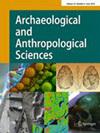The mortuary use of horses and their role in transport in northwestern China during the early first millennium AD: a zooarchaeological case study of Yangjiazhai
Abstract
Horses became increasingly integrated into various aspects of Chinese society following the establishment and consolidation of the Silk Roads at the end of the first millennium BC. Previous research has shed light on the use of horses for transport and their roles in mortuary practices prior to the rise of China’s first unified dynasty, both within and beyond the core regions of agricultural societies. However, zooarchaeological data on horses from post-Qin contexts remains limited. Here, we present an osteological analysis of horse skeletons recovered from burials of the late Eastern Han to early Wei-Jin periods at Yangjiazhai in northeastern Qinghai Province of China. Our results show that the selection of horses for inhumation at Yangjiazhai did not appear to follow specific standards or customs. The two horses from burials M2 and M23 exhibited distinct skeletal and dental abnormalities, which point to their use as ridden horses. The severe vertebral fusion observed in the thoracic and lumbar vertebrae suggests that these horses suffered from spondylosis of varying degrees. These findings represent the first archaeological cases of equine spondylosis reported in China. The zooarchaeological data from the Yangjiazhai horses provide new insights into the mortuary use of horses and their role in transport on the peripheries of the agricultural dynasties during the early first millennium AD and open up further discussions on the dynamics that may have shaped mortuary practices in the region during this period.

 求助内容:
求助内容: 应助结果提醒方式:
应助结果提醒方式:


